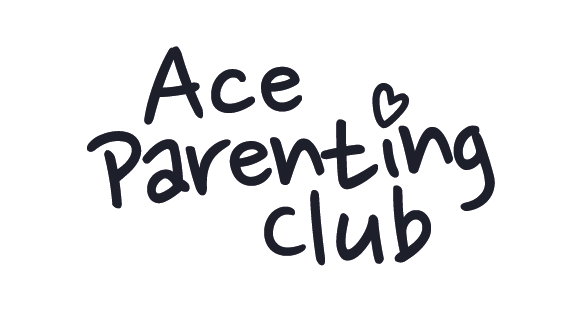
As someone who suffers from an extreme needle phobia I looked for anything and everything that would help me cope with childbirth. I was terrified I would have to have a needle during birth. I heard about Hypnobirth and thought it sounded too good to be true. Surely some breathing exercises could not help manage pain during one of the most painful experiences you could go through. Every medical person I spoke to just listed all of the pain relief that was available – guess what? Most of these are administered by a needle. Here are the top 5 things I learned from Hypnobirth.
1. Is Hypnobirthing Just for Mothers?
When I first introduced hypnobirth to my husband, Mark, he wasn’t thrilled about spending his Sundays in two-hour sessions. But knowing how anxious I was about giving birth, he agreed to give it a try—and it turned out to be invaluable for both of us.
Hypnobirth isn’t just for mums; it’s a team effort. While the focus is often on helping mothers stay calm and manage pain, the course equips partners with practical ways to support their partner and be involved in the birthing process. Mark learned techniques to help me relax, how to create a calming environment, and what to expect during labour, giving him a clear and active role.
2. Is Hypnobirth All or Nothing?
A common myth about hypnobirth is that you need to follow it perfectly for it to “count.” In reality, hypnobirth is highly flexible, it provides you with a toolkit of techniques you can adapt to suit your needs.
During a hypnobirth course, you’ll learn:
- Labour mechanics: Understanding each stage of labour helps make the process feel less overwhelming.
- Birthing positions: Different positions can be helpful depending on the stage or your baby’s position.
- Breathing techniques: Tailored breathing methods for different phases of labour.
Labour is unpredictable, so the key is adapting. You might find some techniques work better than others depending on the position of your baby or the length of your labour. For instance, visualising the mechanics of labour kept us calm, even though some positions we’d practiced didn’t feel right on the day.
Hypnobirth isn’t about perfection—it’s about using the tools that feel right for you. Every birth is unique, so trust yourself to tailor the techniques to your experience. Whether it’s breathing, movement, or mindset strategies, hypnobirth is there to help you feel calm and in control.
3. Is Hypnobirth Just Made-Up Nonsense? A Mum’s Honest Experience

When I told my mum, who is a nurse, about hypnobirth, she was supportive but sceptical. She listened to my plans and read the materials but she expected I’d need medical intervention. Fast forward to my labour and her doubts completely disappeared.
A common misconception about hypnobirth is that it’s just about breathing and visualisation. While relaxation techniques are important, the course also covers:
- Hormones: How oxytocin and endorphins promote calm and efficient labour.
- Muscles: Understanding how the uterus works during contractions.
- Practical tools: Techniques like breathing, positions, and pain management options, such as water birth.
This knowledge gave me confidence and a sense of control during labour. During my labour I progressed quickly—I dilated from 0 to 9cm in five hours, using only paracetamol. Visualising what was happening in my body helped me stay calm and focused and I found that a birth pool provided incredible pain relief.
Even my mum, initially doubtful, described it as “magic.” Watching me use these techniques transformed her view of hypnobirth.
If you’ve dismissed hypnobirth as “nonsense,” I encourage you to explore it. The combination of science, practical tools, and relaxation techniques makes it a powerful way to feel calm and prepared—not for a “perfect” birth but an informed and supported one.
4. Can You Still Have a Hypnobirth if You Need a C-Section?

Many assume a c-section means hypnobirth is off the table, but that’s far from true. During my labour, I planned for a natural birth with minimal interventions. While I progressed well in the birthing pool, complications arose when my placenta didn’t deliver, leading to a haemorrhage. Despite needing an IV and medications which was very scary, hypnobirth techniques—especially breathing—helped me keep some what calm and focused.
The same principles apply to c-sections. You can incorporate hypnobirth elements to create a calmer experience, such as:
- Playing calming music in the operating theatre.
- Requesting delayed cord clamping, if safe.
- Prioritising immediate skin-to-skin contact with your baby.
Hypnobirth is about flexibility. Birth often takes unexpected turns, but techniques like breathing, visualisation, and relaxation adapt to any situation. It’s not about achieving a “perfect” birth but feeling empowered and prepared. Whether it’s a water birth or a c-section, hypnobirth tools can help you feel in control and create a positive experience.
5. Is Hypnobirth Only Useful for Labour? Benefits Beyond Birth
When I first explored hypnobirth, I thought it was purely about preparing for childbirth. As someone prone to anxiety, the idea of staying calm during labour really appealed to me. What I didn’t expect was how much I’d rely on those techniques well beyond the delivery room.
The newborn stage brings sleepless nights, endless feeds, and the constant worry of being a new mum. I found the relaxation and breathing techniques I’d learned through hypnobirth incredibly helpful during these moments. They became second nature, grounding me when I felt overwhelmed.
These skills also proved invaluable in unexpected challenges. When my eldest was hospitalised with breathing difficulties, I instinctively used the breathing exercises to stay calm and focused, helping me support my child through a difficult time.
Hypnobirth isn’t just for labour—it’s a lifelong toolkit. Techniques like controlled breathing, mindfulness, and visualisation can help with:
- Managing anxiety.
- Staying calm in high-stress situations.
- Finding moments of peace in busy family life.

Our Final Thoughts
When we first heard about hypnobirth, we were sceptical. But after trying it, we found the techniques invaluable during both of our pregnancies—even though the births were very different. The practical tools and knowledge it offers helped us feel more in control and better prepared for whatever came our way.
One of the great things about hypnobirth is how flexible it is. You don’t need to follow everything perfectly; you can adapt the techniques to suit your situation. For us, even simple methods like breathing exercises and understanding the stages of labour made a huge difference.
If you’re considering hypnobirth, take the time to do some research. Learn what it’s all about, and see if it might work for you. And if you decide it’s not your thing, that’s fine too—you’ll at least have explored it and made an informed decision.
For us, hypnobirth turned out to be an empowering experience, helping us stay calm and confident in the moment. It’s not about having a “perfect” birth; it’s about feeling supported and prepared in whatever way works best for you.


